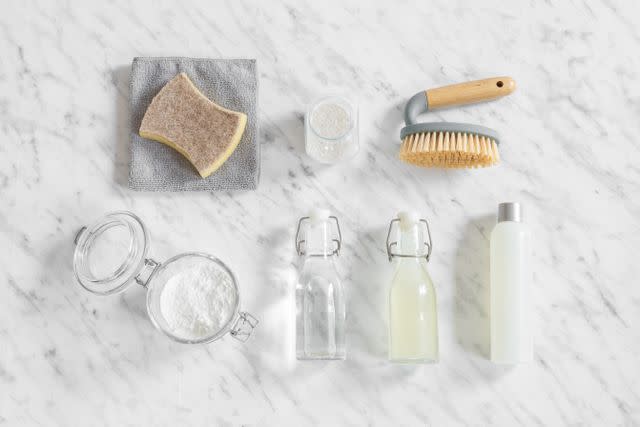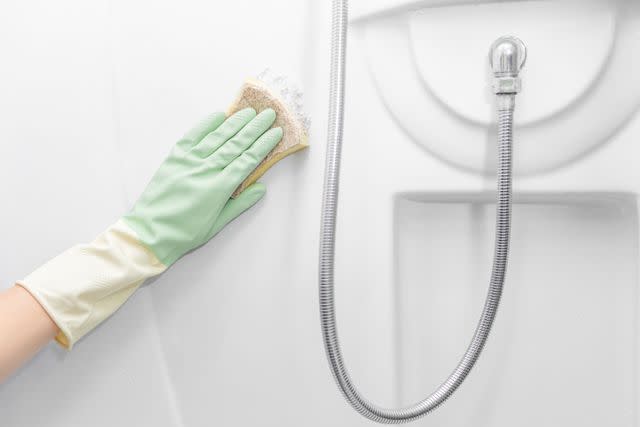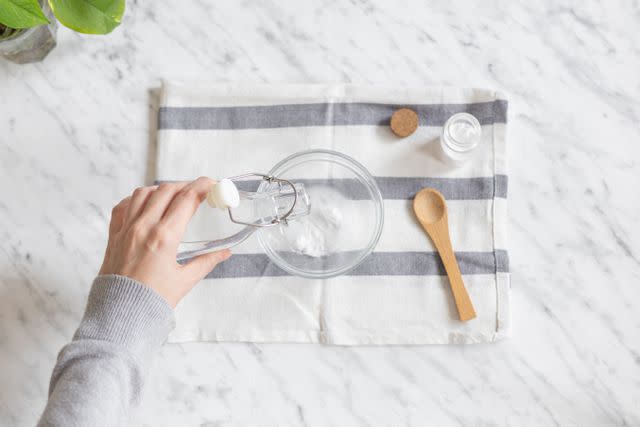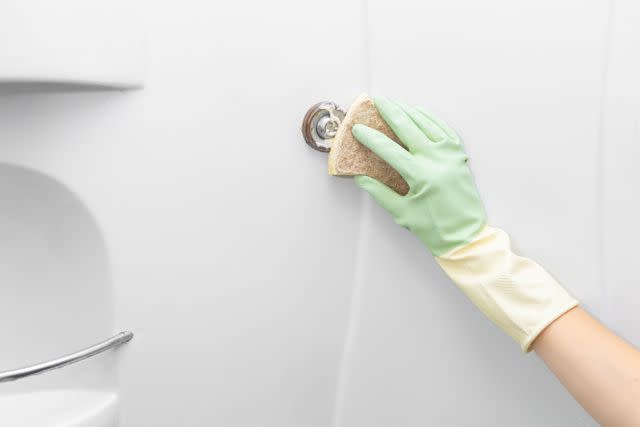How to Clean a Fiberglass Shower: 2 Easy Ways
:max_bytes(150000):strip_icc():format(jpeg)/how-to-clean-fiberglass-shower-7567423-hero-314f1d13fa214a45a1f3923b280787d8.jpg)
The Spruce / Sanja Kostic
A fiberglass shower and tub surround is a durable and cost-effective addition to the bathroom. However, fiberglass finishes can quickly become dull due to soap scum. It is important to know the right way to clean fiberglass, as it cannot stand up to harsh cleaners and abrasive scouring pads.
We're showing you two methods to keep your fiberglass shower clean with simple products you have on hand.
How Often to Clean a Fiberglass Shower
Clean fiberglass showers and tubs weekly to remove body soil and soap scum that clings to the finish. To make weekly cleaning a breeze, take a minute to wipe down the walls after each shower. Use a squeegee or a towel to remove water and soil to help prevent build-up that will be more difficult to remove later.
Before You Begin
Avoid abrasive cleaners on fiberglass showers, like scrubbing powders, and abrasive tools like steel wool, pumice stones, or stiff wire brushes. When scratches occur, soil settles into the area, making cleaning harder. Be sure to also avoid harsh cleaners like chlorine bleach and ammonia because they can damage the resin. While there are dozens of commercial cleaners available, never combine any type of household cleaning products to avoid possibly hazardous fumes.
Tip
These same cleaning supplies and methods can be used to clean cultured marble bathroom vanity tops and sinks. Cultured marble is created from pulverized stone and resin and is subject to the same issues as fiberglass.
Cleaning Supplies You Will Need

The Spruce / Sanja Kostic
Baking soda
Distilled white vinegar
Hydrogen peroxide
Lemon juice
Laundry borax
Non-abrasive sponge
Soft-bristled brush
Microfiber cloth
How to Clean with Baking Soda and Vinegar

The Spruce / Sanja Kostic
After removing all the bottles and accessories in the shower, turn on the hot water and allow steam to accumulate in the shower stall to make cleaning easier.
While the shower is steaming, make a paste of one cup of baking soda and one-fourth cup of white distilled vinegar in a small bowl. You can double the amount if the shower stall is large.
When it stops foaming, turn off the water and spread the paste on the warm floor and walls of the enclosure with a non-abrasive sponge.
Allow the paste to work for ten minutes and then rinse away.
Dry the surfaces completely with a microfiber towel.
How to Clean with Hydrogen Peroxide and Baking Soda

The Spruce / Sanja Kostic
Steam the shower to loosen the soil.
Make a paste of one-fourth cup of hydrogen peroxide and one cup of baking soda in a small bowl.
Spread the mixture on the fiberglass enclosure and let it work for 15-30 minutes.
Rinse well and dry the surfaces with a soft towel.
How to Remove Tough Stains from a Fiberglass Shower

The Spruce / Sanja Kostic
For tough stains, including rust, left by bath products sitting on a shelf or floor, mix laundry borax and a bit of lemon juice to form a paste. Spread the mixture on the stained area and allow it to work for 15 minutes before wiping it away with a microfiber cloth. Rinse the area well and buff dry.
If non-slip stickers on the shower floor or a removable accessory like a shaving mirror left stickiness on the fiberglass, use a paper towel saturated in olive oil to cover the area. Allow it to work for at least 15 minutes. Use a plastic scraper or the edge of a credit card to remove the stickiness. Clean the fiberglass as recommended.
Additional Tips for Cleaning Fiberglass Showers
Prevent mold and mildew by removing soil and moisture. Towel down the shower after each use, improve ventilation by using the exhaust fan every time you shower, open a window, or if you don't have a window or ventilation is poor, get a dehumidifier for the bathroom.
Bath mats with suction cups are good for safety, but they're also a breeding ground for mold and bacteria. Wash them every week and replace them every two years to help prevent mold problems.
Shower caddies or shower nooks tend to harbor mold and mildew; remember to empty and clean these areas whenever you clean your shower.
Once your fiberglass shower stall is sparkling clean, you can use fiberglass boat wax to provide a protective coating on the walls, allowing water to run right off without spotting. However, never use the wax on the floor because it can leave a slippery finish.
Read Next: How to Clean a Marble Shower
Read the original article on The Spruce.

